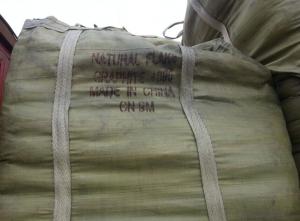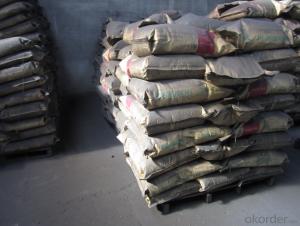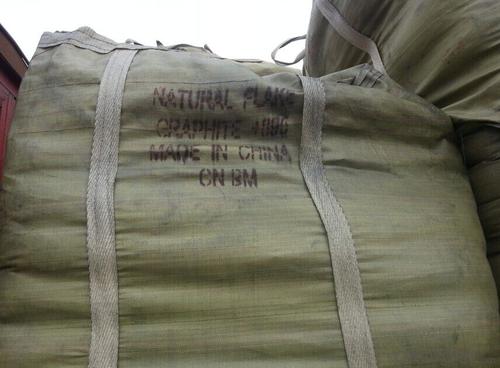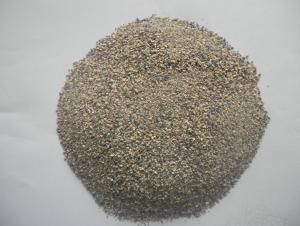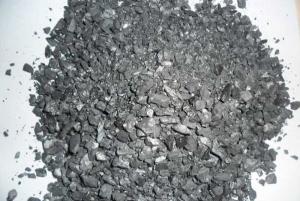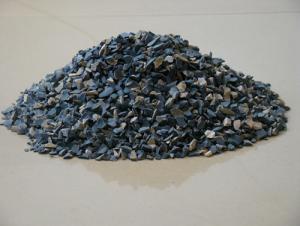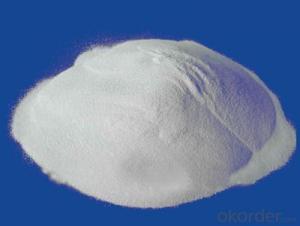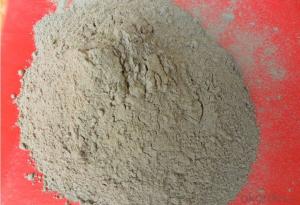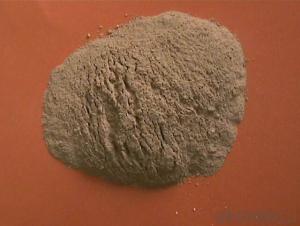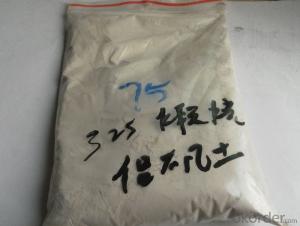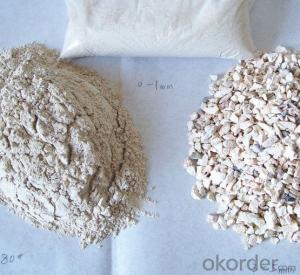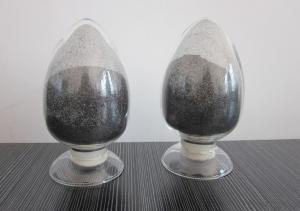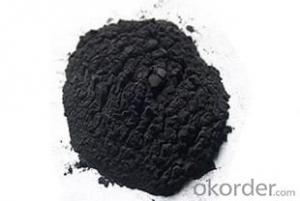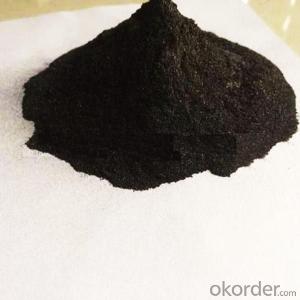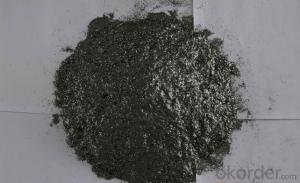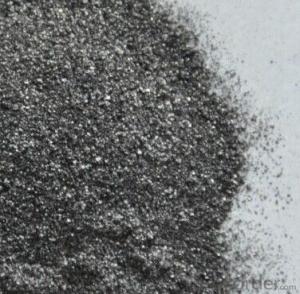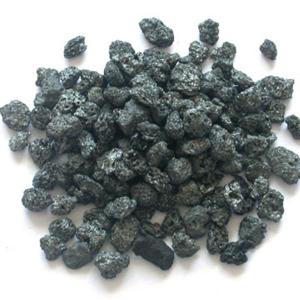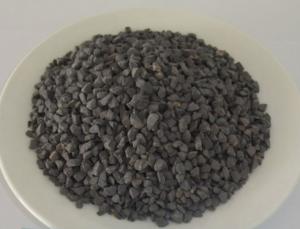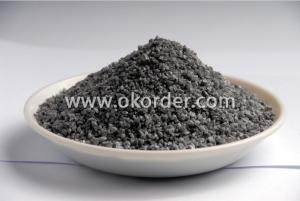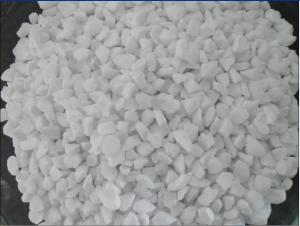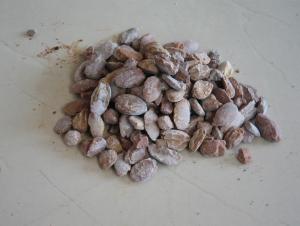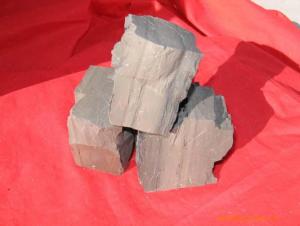Raw Materials for Refractory:NFG Natural Flake Graphite with Good Price
- Loading Port:
- Tianjin
- Payment Terms:
- TT OR LC
- Min Order Qty:
- 0 m.t.
- Supply Capability:
- 20000 m.t./month
OKorder Service Pledge
OKorder Financial Service
You Might Also Like
Application of Natural Flake Graphite
1.Used as release agent lubricant in the production of chemical industrial catalyzer.
2.Used as high temperature resistance lubricant base material,erosion resistance lubricant base material.
3.Used as powder metallurgy release agent and metal alloy material.
4.Suitable for making graphite refractory bricks.
Product Description of Natural Flake Graphite
1.Types:High-purity graphite,high carbon grahite.
2. Specifications:The particle size ranges from (325mesh-35mesh),
and the carbon content ranges from85 to 99.9%.
PROPERTIES | CNBM-NFG1 | CNBM-NFG2 | CNBM-NFG3 |
Medium Carbon | High Carbon | High Pure | |
Carbon | 85-95% | 96%-99% | 99.9% |
Mesh | 45 μm-500 μm (325mesh-35mesh) | ||
V.M. | ≤4% | ||
Moisture | ≤0.5% | ||
Color | Black Shiny, | ||
Appearance | Flake | ||
Packaging & Shipping of Natural Flake Graphite
Packaging: 1.25MT jumbo bags or 1MT jumbo bags
Delivery details: according to customers’ requirements
Application of Natural Flake Graphite
1.Used as release agent lubricant in the production of chemical industrial catalyzer.
2.Used as high temperature resistance lubricant base material,erosion resistance lubricant base material.
3.Used as powder metallurgy release agent and metal alloy material.
4.Suitable for making graphite refractory bricks.
Pictures
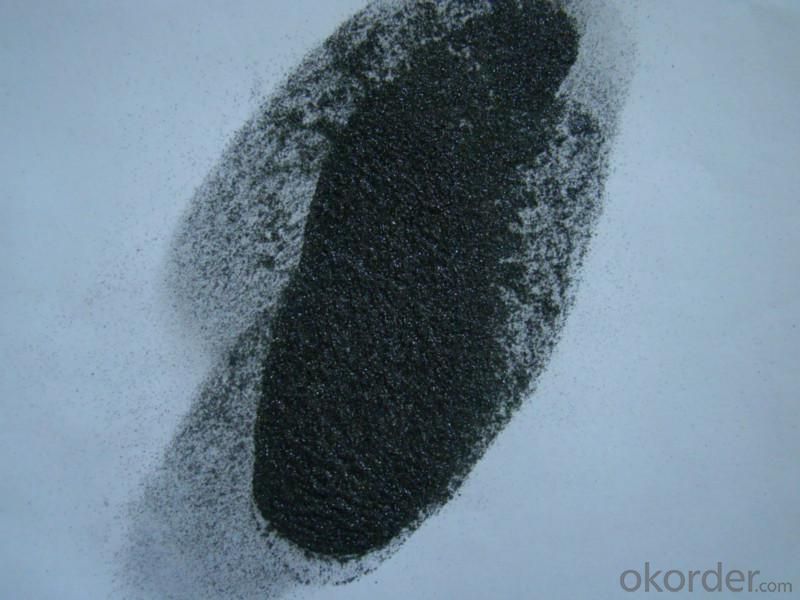
- Q: Which company needs the new refractories?
- The power plants are mainly used in steel plant, lime kiln, coking plants, boilers, etc. I will try my best to answer what I can. There are too many glassworks. You can tell me more anout what you need. As long as there is a large kiln business, the refractories and aluminum manufacturer are needed.
- Q: What is unshaped refractory?
- Concrete。 Early concrete technology appears, it is not forming products in the heat furnace, some parts such as pit heating furnace furnace wall, rotary kiln mouth ring, cutting slope and discharge chamber wall, etc., are able to design large masonry (top heating block weighing 3-4 tons) made concrete. Concrete cattle production method is to pour the material into the model, vibration molding, after the release of heat treatment, to provide users in addition to large blocks, weight, in use, and machine pressure brick no essential difference. The amount of water used in the casting material produced by the manufacturer is less than 10% above that in the field, and the processing quality is good and the quality is stable. As the bricks are large and heavy, the site shall have lifting equipment. As long as the site can be hoisted, the concrete shall be used as far as possible, or smaller ones, and some people can lift it. Concrete does not require the user to do a special heat treatment, this point is very meaningful.
- Q: Urgent question: could you tell me that the export of refractory materials to Vietnam is to be packed in wooden cases and smoked?
- Solid wood logs are necessary. If it is the type of smoke free material, it will not be necessary. You'd better confirm it with the port of destination. Vietnam has the requirement to smoke
- Q: How many hours of the fire endurance time of the rock wool laminboard?
- The fire endurance time of the rock wool laminboard is generally adout 1 or 2 hours.
- Q: How long is the fire endurance of Grade A fire resisting shutter
- The fire endurance of Grade A fire resisting shutter is not lower than 1.20h. Use fire resisting shutter as fire?compartment separation in places where it is difficult to set firewall. When fire resisting shutter whose unexposed surface temperature rise is used as judging condition of fire endurance is used, its fire endurance should not be lower than 3h. When fire resisting shutter whose unexposed surface temperature rise is used as judging condition of fire endurance is not used, individual protection of ?closed automatic water spray system shoule be set at two sides of the shutters and duration of water spray system should not be less than 3.0h.
- Q: What are the specific steps of stirring the steel ladle castable?
- Steps are as follows. 1 Compulsory mixer is used to stir the castable and bags, rope and other debris can not mix in the castable when stirred. 2, Castable should be unpacked on the scene. Stirred volume depends on the capacity of the mixer. Castable should be accurately measured and put into a blender. 3 The process of first dry mixing and then wet mixing is adopted. After the castable is added to the mixer, it is dryly mixed for 2 minutes, add about 5.2 to 5.5 percent of water and continue to add water while stirring. Water that is 80% of the total should be added, and then decide whether to continue to add or not depending on the consistence (noting that the water must be clean water and sewage can not be used). Then it is wetly mixed for 4 minutes and stirred for not less than 6 minutes at one time, until castable is even. In general, the bottom is slightly dry and the wall of the ladle is slightly dilute (the amount of water is only for reference). 4, The amount of water and mixing time should be controlled strictly when stirred to ensure that the needs of the consistency are met. If castable is too thin, it will seriously affect the quality of the material. The stirred volume, stirring time and water that is added should be consistent and they can not suddenly be thick or suddenly be thin. If the consistency does not meet the requirements, the castable should be put back to the mixer and stirred with appropriate water or dry materials. 5, It should be stirred evenly and casting should finish in 20 minutes, in order to avoid sclerosis, affecting structural strength of ladle lining 6, After each completion of construction, varieties of castable should be changed and the mixer should be cleaned 7, Stirring can stop in halfway. If the mixer breaks down and it can be repaired in a short time, some of the materials have to be removed before the machine is opened. If the machine can be repaired on time, castable refractory should all be removed.
- Q: Who can introduce the external wall thermal insulation materials fire rating regulations?
- 1. The thermal insulation material of level A combustion performance: Rock wool, glass wool, foam glass, foamed ceramics, foam cement, hole-closed perlite, etc. 2. combustion performance is level B1 insulation materials: Extruded polystyrene board (XPS) after special treatment / Special treatment of polyurethane (PU), phenolic aldehyde and gelatine powder polyphenyl granule 3 combustion performance is level B2 insulation material: Molding polystyrene board (EPS), extruded polystyrene board (XPS), polyurethane (PU), polyethylene (PE), etc. See the 2009 edition construction technical measures 4.3.6 Level A insulation material is only for fireproofing, but its thermal insulation performance is not better than organic XPS \\ EPS and other materials. I feel the best insulation materials should be modified phenolic board, which can keep insulation and fireproofing, but the unit price is very expensive. Insulation materials in the domestic market have some disadvantages, it is better to considere the materials within the acceptable range in the building needs.
- Q: Fire insulation and fireproof insulation board materials What is the difference in performance?
- What is the difference between fireproof insulation board and fireproof materials in their performance? Fireproof Materials prevents burning through insulating while others by chemical reactions. The overall heat conductivity coefficient of Insulation materials are generally lowered by thermal conductivity of the material itself and the structure of the material. Inorganic active insulation material uses ordinary cement, insulation stone, calcium powder, platycodon grandiflorum as the main raw material, produced after numerous tests with advanced production technology and chemical technology. Products features fire retardant,anti-aging properties and stable performance, low deformation coefficient, environmentaly friendly, compatible with the wall base layer and plastering layer. It has good security and stability and is as durable as ordinary buildings. Strong fire resistance: Fire insulation board is made of inorganic materials (cement), fireproofing level reaching to A1. As it does not burn, it is fireproof.
- Q: Do you know where I can buy refractories?
- Refractories are sold in following companies : Address of Huadu Refractories Co., Ltd. : NO.11 Huanjin Road, Fuyang, Hangzhou Address of Zhenxing Special Fire-Proof Material Co., Ltd. : No. 54 Pingjing Road, Yuhang District, Hangzhou Address of Zhongnai Refractories Co., Ltd.: No. 345 Fuyang, Hangzhou, Zhejiang Province
- Q: What kinds of refractory materials that uses a-Al2o3 powder? What are the purpose of it?
- 04La-Al2O3 powder is a alumina powder whose raw material is industrial aluminum oxide which has been calcined at high temperature. It is a good polishes for ceramics and jade, meanwhile, it is also an important raw material for high-end refractory materials. The technical indicators parameters A1023 mark A1535 chemical composition AL2O3≥ 99.92 3%, ≥ 3.10FE203≤ 0.799 Refractory calcined alumina powder (a-Al2O3) 1.2 true density (g & # 47, by fully ground powder made of different fineness .O.10 0.07 0.04NA2O≤ 0.93a-Al2O3 (%) ≥ 95 95 primary crystallization average grain (um) 2 ~ 3 3 ~ 5 average particle size (um) 40 ~ 602.6SIO2≤ 0.1 0.15B2O3≤ - 0, glass, engineering ceramics typical use electronic ceramic insulating ceramic refractory ceramic wear 3
Send your message to us
Raw Materials for Refractory:NFG Natural Flake Graphite with Good Price
- Loading Port:
- Tianjin
- Payment Terms:
- TT OR LC
- Min Order Qty:
- 0 m.t.
- Supply Capability:
- 20000 m.t./month
OKorder Service Pledge
OKorder Financial Service
Similar products
Hot products
Hot Searches
Related keywords
